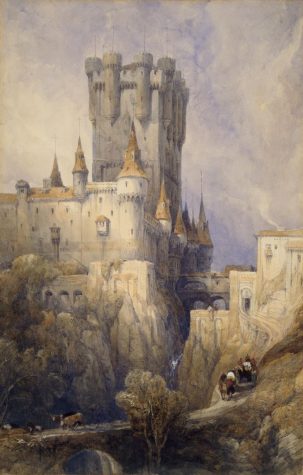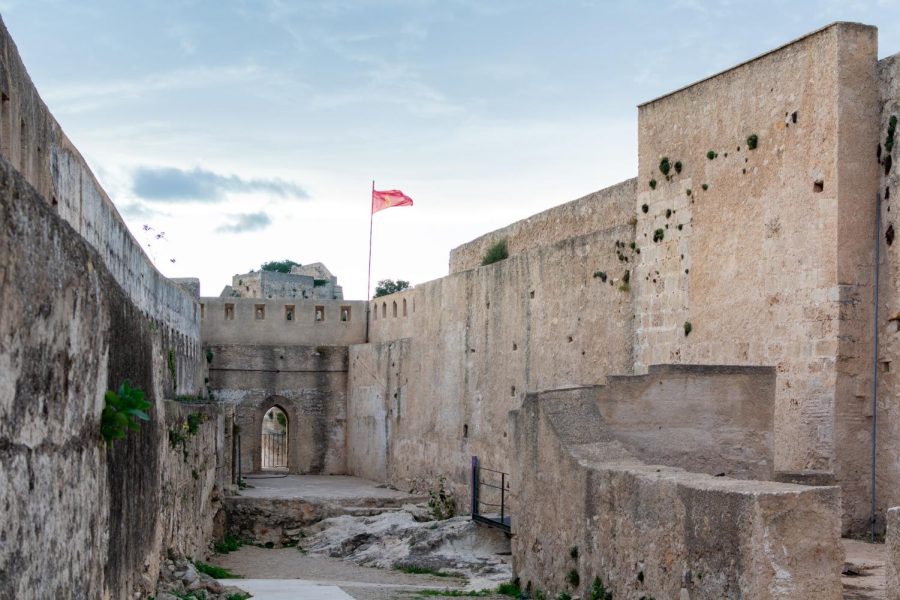La Historia de España
The History of Spain From 1800 BCE to 1700.
This castle, Xativa Castle, has been standing since at least the third century BC. It was well preserved until 1748 when a large earthquake struck the castle.
Spain has a rich and fascinating history dating back to the Bronze Age. Dating from around 1800 BCE, the Bronze Age fell between the Stone Age and the Iron Age. At that time, pre-historic humans began to use bronze tools or weapons. In 900 BCE, the Celts arrived in Spain. The different Celtic tribes in Spain were Lusitanians, Cantabrians, Asturians, Carpethans, and Arevaccans. They were very in-tuned with their environment and known for raising cattle on the Iberian plains or hills. In 218 BCE, The Second Punic War began in Spain. When the war was over, part of Spain became a Roman province, called Hispania. The Romans didn’t stop there, however. By 19 BCE, all of Spain was ruled by the Roman Empire.

In the year 500, the Visigoths took over most of Spain. The Visigoths were one of two early Germanic peoples. By 711 the Moors had invaded Spain, renaming it Al Andalus. In 718, the Reconquista, a series of battles when Christians began to retake Spain from the Moors, began. After over 400 years the Christians were finally successful in taking over Spain and the Kingdom of Aragon is formed. In 1139, under Christian rule the Kingdom of Portugal was created on the west coast of the Iberian Peninsula.
One of the most consequential unions in Western history, Isabella I of Castille married Ferdinand II of Aragon in 1469. This marriage would ultimately unite Spain. Within 10 years the Spanish Inquisition began. A judicial group assigned to combat heresy in Spain, the Inquisition was known mostly for their brutal and violent punishments for those accused of heresy. Thousands of people were burned at the stake and another tens of thousands were killed when the inquisitors forced Moriscos to leave Spain. In 1479, Isabella and Ferdinand are crowned King and Queen of the entire nation.
In 1492, the Reconquista ended with the successful conquest of Granada. The Jews were expelled from Spain during this time and Christopher Columbus gained Queen Isabella’s sponsorship for his expedition to discover the New World. Just shy of 30 years later Hernan Cortes conquered the Aztec Empire in present day Mexico, and shortly after Francisco Pizarro conquered the Incan Empire. Pizarro established the city of Lima, and with their New World colonies Spain became the most powerful kingdom in the world.

In 1556, Philip II ascended to the throne of Spain. During his reign, Don Quixote by Miguel de Cervantes, which is considered to be one of the first modern novels, was published in 1605. Only thirteen years later the Thirty Years War began. This was a series of wars fought mainly in the Holy Roman Empire by various nations for a variety of reasons. It is considered one of the deadliest and most destructive wars in European history, with an estimated four to eight million deaths.
In 1701, the War of Spanish Succession began after the death of King Charles II. He had no children and was known as the Bewitched due to his physical disabilities. The throne could go to either the House of Bourbon or the House of Habsburg. The House of Bourbon won and Philip of Anjou became King of Spain.
Spain is such an important country as it became the most powerful and well-known country in the world. Spain is why we have countries like the United States, Canada, and Mexico because they helped to discover the New World. The New World ultimately became our country, the United States.


